An influential pre-war sexologist argued that it would be better for morons to "mate with goats" than with women. A psychoanalyst specializing in childhood disorders added that zoophilia "occurs relatively frequently among rural youth".
The Bieszczady Mountains were not Warsaw. Instead of cashiers raiding banks and factories, the villages were prowled by gangs of teenagers stealing underwear and eggs. Instead of gangs collecting tribute from hawkers, there were poachers and fish thieves. Sexual crime also took on a completely different face than in a big city. And for the leader of K., who performed police service in the Turczański poviat, it was a real nuisance.
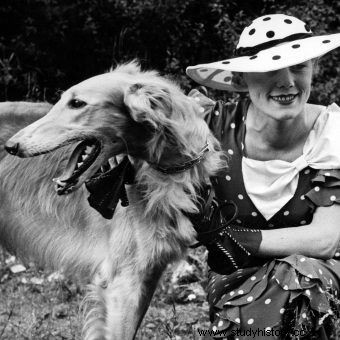
Woman with a Siberian Greyhound dog. Photo from the Katowice dog show from 1935
The officer knew exactly what paragraph to pursue to chase the farmers who steal wood or too bloody youngsters who slapped their heads with spikes during lavishly sprinkled country dances. But what was he going to do with… goat rapists?
He scrupulously browsed the codes, looking for a recipe that would allow him to crush a particularly wicked sodomite. He was convinced that the relevant article must exist. And that he simply can't track him. Finally, he couldn't stand it. In the late summer of 1933, he compiled a letter to the editorial office of Gazeta Police Państwowa. At the Police Station. " He described in detail the case of a certain M.M. This man:
(…) He has been involved in a sexual harassment several times, including once caught by his mother mating with a cow in the barn at night. He was then seen by a neighbor co-mating with a pig in a pigsty. Finally, for the third time, he was found co-mating with a bitch in a barn.

Cattle grazing in the fields in the Vistula. Photo from 1933
What to do? Asked the desperate policeman. The answer was short. Thread. Because, as editor W. Skrobecki said:"The harlotry against nature, consisting in co-mating with animals (...) is not punished and is an act essentially indifferent from the point of view of the Polish penal code.
"That mare with whom he was a disgraceful deed." History of the approach to zoophilia in Poland
The confusion of the Turiec leader is easy to understand. The end of the criminal record of zoophilia was a fresh step. A year earlier, the old Austrian code was in force in Eastern Lesser Poland. In its light, for "harlotry against nature, that is with animals", you could be sent to a heavy prison for up to 5 years. Heavy, and therefore strictly fasting, prisoners were only given "hard beds" or were kept in solitary confinement for weeks. Also the old German regulations - enforced throughout the 1920s in the western provinces - severely punished zoophilia.
The change was by no means a coincidence. Many influential jurists fought to lift sanctions against animals. This group included, for example, Stefan Glaser, a law professor from Vilnius.
“Sexually insane people cannot be expected to resist a morbid urge that paralyzes their will. They are unable to satisfy their sex drive in a way that is alien to their nature. They would have to suppress this drive completely, and this has been shown by research to be impossible, ”reminded the members of the codification commission in 1925. He struck a tone that has proved to be extremely effective many times in the work on the Polish code. He stated that the current regulations smell like the Middle Ages.
In Glaser's opinion, sodomy was punished not so much for the public good as for attachment to archaic superstitions. Historically, people believed that intercourse with an animal could give birth to a deformed beast. A child with hooves, a tail, and maybe even devil's horns. Such a prospect forced him to be absolutely strict. Indeed, in the second half of the 18th century, the Polish judicial authorities treated cases of sodomy with the meticulousness of inquisitors. When, in 1763, a certain Błażej Kaczkowski near Brzesko in Małopolska raped a mare, it was decided that "the mare with whom he was unworthy" was to be "burned on a pile of trees". All this so that "what a monster [emerged] from it".
In the meantime, however, biology has made great strides. Although there were still cases of collective hysteria as a result of the birth of disabled children (in 1920 the inhabitants of Krakow believed that… the devil incarnate was born at the local delivery room), scientists knew better. And they wanted to send a clear signal to society. Maybe too bright anyway.
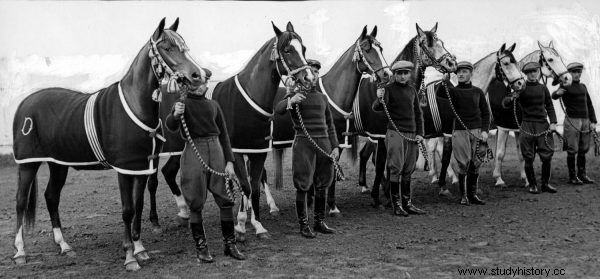
Presentation of Polish Arabian horses. Photo from 1937
"Sick people who should not be punished." Polish codex and sex with animals
The codification commission endorsed Glaser's view. The influential court expert Wiktor Grzywa-Dąbrowski was convinced that the decision was not only modern, but also right. Lawmakers have accepted that individuals who use animals are not so much criminals as "sick people who should not be punished, but should be considered medical intervention."
Grzywa-Dąbrowski was certainly right to some extent. The changes in the code were also important because along with the provisions on zoophilia, the punishability of homosexual acts was also removed. Both the Austrian and German laws equated relations with animals and with people of the same sex. Both were considered a reprehensible "harlotry against nature." After 1932, voluntary treatment of homosexuals was recommended at best. The positive change was unmistakable. However, as in many other cases, the baby was thrown out with the bathwater.
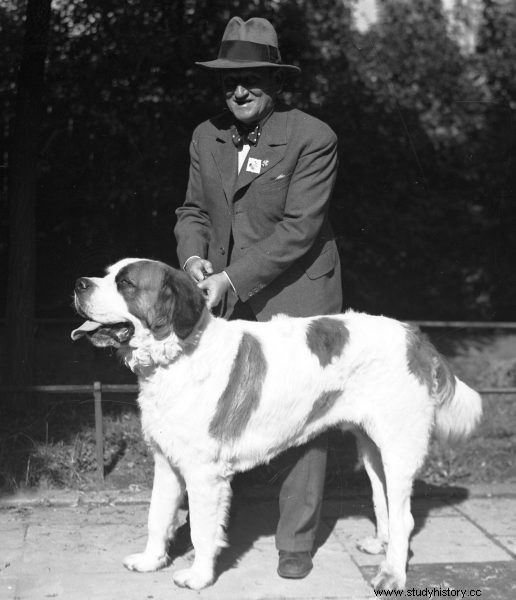
Dog show in Krakow. St. Bernard with the owner. Photo from 1935
The Code did not contain any provisions penalizing the abuse of animals. Compulsory hospitalization of amateurs of sex with pigs was not ordered. Overnight, zoophilia completely ceased to interest the police and the prosecutor's office. It was dealt with only when it was cultivated in public or in the presence of children. Otherwise, even the deaths of the battered animals did not attract the attention of the authorities. Poland has officially become a country without zoophilia. And only psychiatrists and sexologists reminded that there is a real gulf between the postulated state of affairs and reality.
Real or occasional Sodomism? Pre-war experts on zoophilia
Canute Tangey, author of the brochure Sexual Deviations in the Light of Science , published in Polish in 1912, defined sodomy as "satisfying lust through intercourse with animals." In his opinion, it was "the most brutal type of sexual perversion." However, Tangey reassured readers that this deviation only happens as a result of "mental disorder or extreme mental dullness."
Other specialists did not share his optimism. In the book Sexual Deviations and Marriage , published in 1928 by the well-known venereologist and supporter of eugenics, Leon Wernica, one can find a warning against people "not revealing anything outside their weakness". Seemingly normal, yet - indulging in acts of bestialism.
The popular doctor from Łódź, Paweł Klinger, also drew attention to this topic. A celebrity of pre-war sexology was against throwing all the zoophiles into one bag. He considered true clinical zoophilia only in cases where the sight of a beautiful mare or a purebred dog, especially a greyhound, stimulates the senses of a person who does not feel any sexual attraction to a normal object. He emphasized that such deviants were "very rare".
His experience showed that "occasional sodomism" could be encountered incomparably more often:
Yes, for example, a lone shepherd in the mountains who deviates because of the lack of a normal object will be a random sodomite. Or, say, a farmhand committing this act in a stable with sexual irritation .
Mares, cows, goats and even calves were not safe. There were also attacks on domestic birds:chickens, geese. Less frequently, but nevertheless, cases of maltreatment of dogs and cats have been mentioned. A Krakow court expert, Leon Wachholz, came across a 16-year-old rapist who not only enslaved a woman, but also "committed prostitution with a bitch". In turn, the Encyclopedia of Sexual Knowledge from 1937 mentions "cases of pederasty with a dog that played an active role."
"Workers with low ethical standards." The prevalence of zoophilia in pre-war Poland
The influential psychologist Albert Dryjski stated in 1934 that all of this "happens relatively often among rural youth." Also Stefan Glaser was of the opinion that "these acts are usually committed by the rural population, farm workers with low ethical standards."
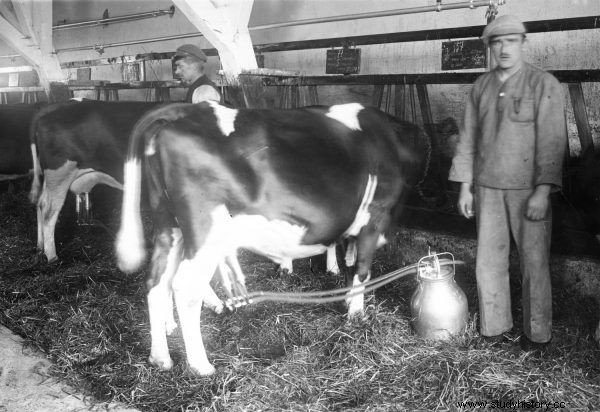
Mechanical milking of cows in a Warsaw dairy. Pre-war photography
The scale of the phenomenon could not be small. Sodomy has even been written as one of the causes of impotence. Apparently, therefore, patients whose organs refused to obey Polish clinics after the owner entered into a close friendship with a sheep or a sow instead of a woman.
If anything was in doubt, it was the degree of mental disorder of the sodomites. Klinger considered half of the zoophiles "degenerates, mostly idiots and mentally retarded." He emphasized that "sodomism is very often associated with sadism to a large extent, because smaller animals die as a result of this act (birds), or in coitu they get slaughtered. " Even so, he had a lot of understanding for the culprits who sexually abused animals. As stated:
From a eugenic point of view, it is a hundred times better if some idiot and half-hearted man mate with a goat than [if] he were to do so with a woman, begetting [him] sam matołków .
Third way - treatment, education, sterilization? Klinger didn't think of. It was simply that the suffering of animals meant little to the people of the interwar period. Stanisław Kurkiewicz was also indifferent to their fate: the author of the most comprehensive and, at the same time, the most controversial sexological research of the entire era . Like other specialists, he argued that zoophilia is extremely common among shepherds or simply - the rural population. He even went so far as to say that in selected cases one could find ... "logical justification" for her.
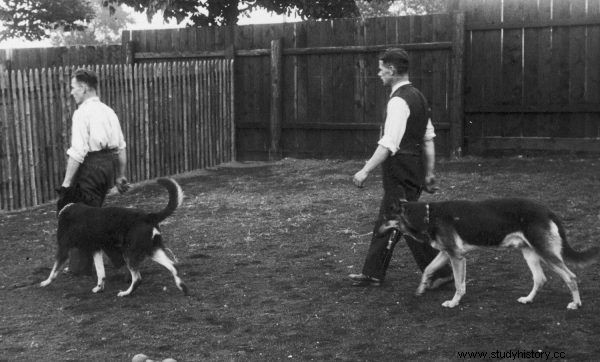
Dog training school in Katowice. Photo from 1937
He understood, for example, that men with too much "overhang" had a tendency to "fuck with a cow, a mare." On the other hand, individuals insufficiently endowed by nature allegedly had good reason to harm "a hen or other female birds."
Overall, the sodomy in men did not shock Kurkiewicz. On the Details of Sex Function tabs , published in 1906, considered her to be a typical "substitute" and therefore "substitute sexual pleasure". "The taste for sodomy is most often developed through abstinence of necessity, in this case forged on the reasoning that the doggie or the kitten will not tell anyone" - he thought.
He estimated that in as many as "five out of six cases" the real incentive for a man to commit misconduct is "not having a woman to commit sex with." Ladies could not count on such indulgence. Kurkiewicz even came to the conclusion that morbid zoophilia is ... a typically female ailment. However, this is a topic for a separate article.
***
Matters that we are ashamed to talk about. And the face of pre-war Poland, about which textbooks are silent. Sexual crime, deviations, morbid prudery and impunity of the perpetrators. Find out what the times of our great-grandparents really looked like.
